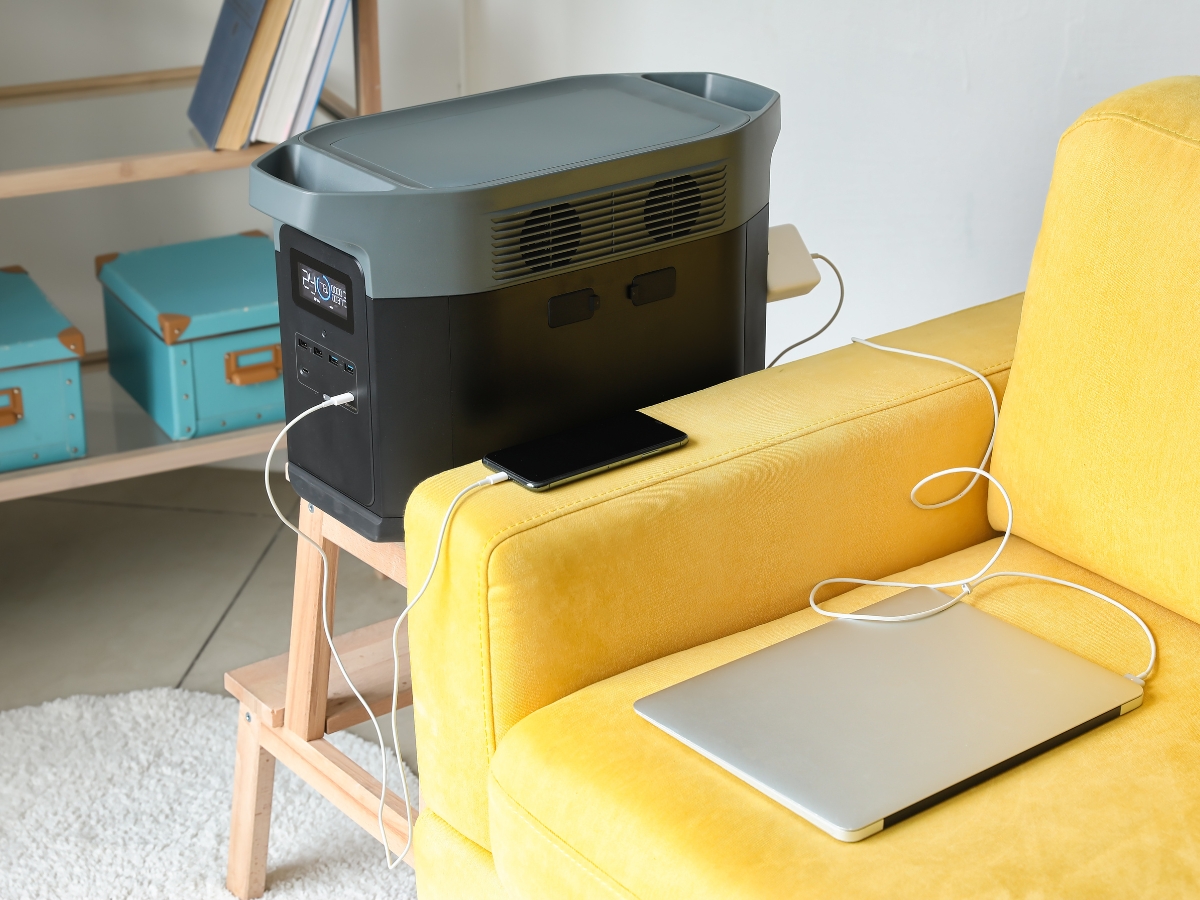You’ve been weighing up getting geothermal to heat (or cool) your home, and now you’ve decided to take the plunge. But you find yourself asking, how many geothermal tons per square foot of house?
As a rule of thumb, one should use a 60,000 BTU (5-ton) system for heating a 2,000 sq. ft. home, and one should not exceed the cooling load by more than 25% to handle the heating load. However, these rules of thumb are unreliable, and one should use a qualified consultant.
The rules of thumb on what size system only scratch the surface of this topic, so let’s dive in for a deeper look at what size system you need and what size heat pump your system will require.
We will examine the following topics:
- How A Geothermal HVAC System Works
- How To Calculate Geothermal Tons Per Square Foot
- Further Factors Affecting Geothermal Tons Per Square Foot
Geothermal HVAC (heating, ventilation, and air conditioning) has many exciting aspects to it, which will affect what size system you will need and, therefore, what it will cost.

How Does A Geothermal HVAC System Work?
Geothermal HVAC leverages subterranean temperatures to provide heating in the winter and cooling in the summer.
Temperatures 4 to 6 feet below ground remain a relatively constant 50 degrees year-round.
The system moves heat into your home or out of it, exchanging it with the ground.
A geothermal HVAC system consists of a geothermal heat pump, an open or closed ground loop, and the distribution system in your house (ductwork or radiant heating).
How Do I Calculate Geothermal Tons Per Square Foot?
Contractors often use rules of thumb when working out how big a geothermal system you will require.
While we do not recommend that you go with a contractor who does not scientifically model your requirements, the following rule of thumb will give you a basic idea of what is needed.
The Rule Of Thumb For Geothermal Tons Per Square Foot
As a rule of thumb, a 2,000 sq. ft. home will require a 60,000 BTU (5-ton) system for heating. You can work out cooling as BTUs per square foot per ton or cubic feet per minute per ton.
Heat pumps for a geothermal HVAC system come in different sizes, typically sold as tons. A 1-ton system is roughly equivalent to 12,000 BTU, so if your current HVAC system uses 48,000 BTUs, you will require a 4-ton geothermal heat pump.
You can figure out approximately how big a heat pump you will require either from your current system size, as indicated above. Alternatively, you can use your climate zone to figure out the number of BTUs needed per square foot multiplied by the size of your home in square feet.
The following table lays out the basic calculations by climate zone for a 2,000 sq. ft. home.
| Climate Zone | Heating/Cooling Dominant | BTUs/sq. ft. | Total BTUs for a 2,000 sq. ft. home | The tonnage of the heat pump required |
| 1 | Cooling | 26-30 | 52,000-60,000 | 5 tons |
| 2 | Cooling | 26-30 | 52,000-60,000 | 5 tons |
| 3 | Cooling | 22-25 | 44,000-50,000 | 4 tons |
| 4 | Balanced | 20 | 40,000 | 3-4 tons |
| 5 | Heating | 22-25 | 44,000-50,000 | 4 tons |
| 6 | Heating | 26-30 | 52,000-60,000 | 5 tons |
| 7 | Heating | 26-30 | 52,000-60,000 | 5 tons |
Another commonly used rule of thumb states that one should not exceed the cooling load by more than 25% to handle the heating load.
However, the following example illustrates the pitfalls of this rule of thumb. A home in Indiana with a heat loss of 60,000 BTUh and a heat gain of 20,000 BTUh would, by this rule, result in a designed geothermal heat pump of 24,000 BTUh.
This scenario would result in a 5-ton heating load and a 2-ton cooling load in a heating dominant location with a 2-ton geothermal heat pump installed.
Therefore, the pump would be grossly undersized for the dominant load, resulting in the need to use supplemental heating and the high energy bills that that implies.
Factors Affecting The Conductivity Of The Ground Loop
Numerous factors affect the conductivity of the hole the ground loop is installed in, such as:
- rainfall
- ground moisture
- types of soil
- the conductivity of the rocks
- quality and quantity of groundwater
We, therefore, advise you to have a highly qualified geothermal consultant design the system for you, one who knows how these various factors affect conductivity and can tweak the software model accordingly.
Having a correctly-sized and designed ground heat exchanger will make a big difference to the size of the heat pump you will need and the overall efficiency of your geothermal system.
Do Other Factors Affect The Size Of A Geothermal Heat Pump?
Several other factors affect how large a heat pump gets, such as the house’s shape, the ductwork’s efficiency, and the total BTU heat gain and heat loss.
If you are using a desuperheater to provide domestic hot water, it will use some of the system’s heating capacity. Therefore, to ensure capacity on the coldest days, you may wish to install a larger heat pump.
Accurately designing the geothermal HVAC system begins with an accurate load calculation, whether a room-by-room calculation for zoned systems or a block load calculation for non-zoned systems. Thus, the load is a lot more complicated than simply square footage.
Doing a whole-house blower door test to assess how tightly a house is sealed will improve the accuracy of the load calculation and indication whether adding air sealing and insulation can improve comfort and reduce the size of equipment required.
The age and efficiency of the ductwork are also important. If the ductwork is leaky, the system will be less efficient than it should be, and you will either need to install larger equipment or supplement the geothermal system, or both. Instead, get efficient ductwork installed first.
The size of the house usually affects the shape, with larger homes usually having more efficient shapes, such as two or more floors. They also have a lower exterior surface/conditioned floor area ratio, making the BTUh/sq. ft. ratio lower.
Thus, one should assess the following factors:
- load calculation by room
- presence or absence of zoning controls
- total BTU heat gain and heat loss
- whether a desuperheater is installed to heat domestic hot water
- the efficiency of the ductwork
- the shape of the house
References
- https://www.nationalgeographic.com/environment/article/10-myths-about-geothermal-heating-and-cooling
- https://www.fixr.com/costs/geothermal-heat-installation#geothermal-heat-pump-size
- https://www.houzz.com/discussions/2402739/geothermal-sizing-question-4-or-5-ton
- https://www.greenbuildingadvisor.com/question/geothermal-sizing-issues-4-ton-or-5-ton



